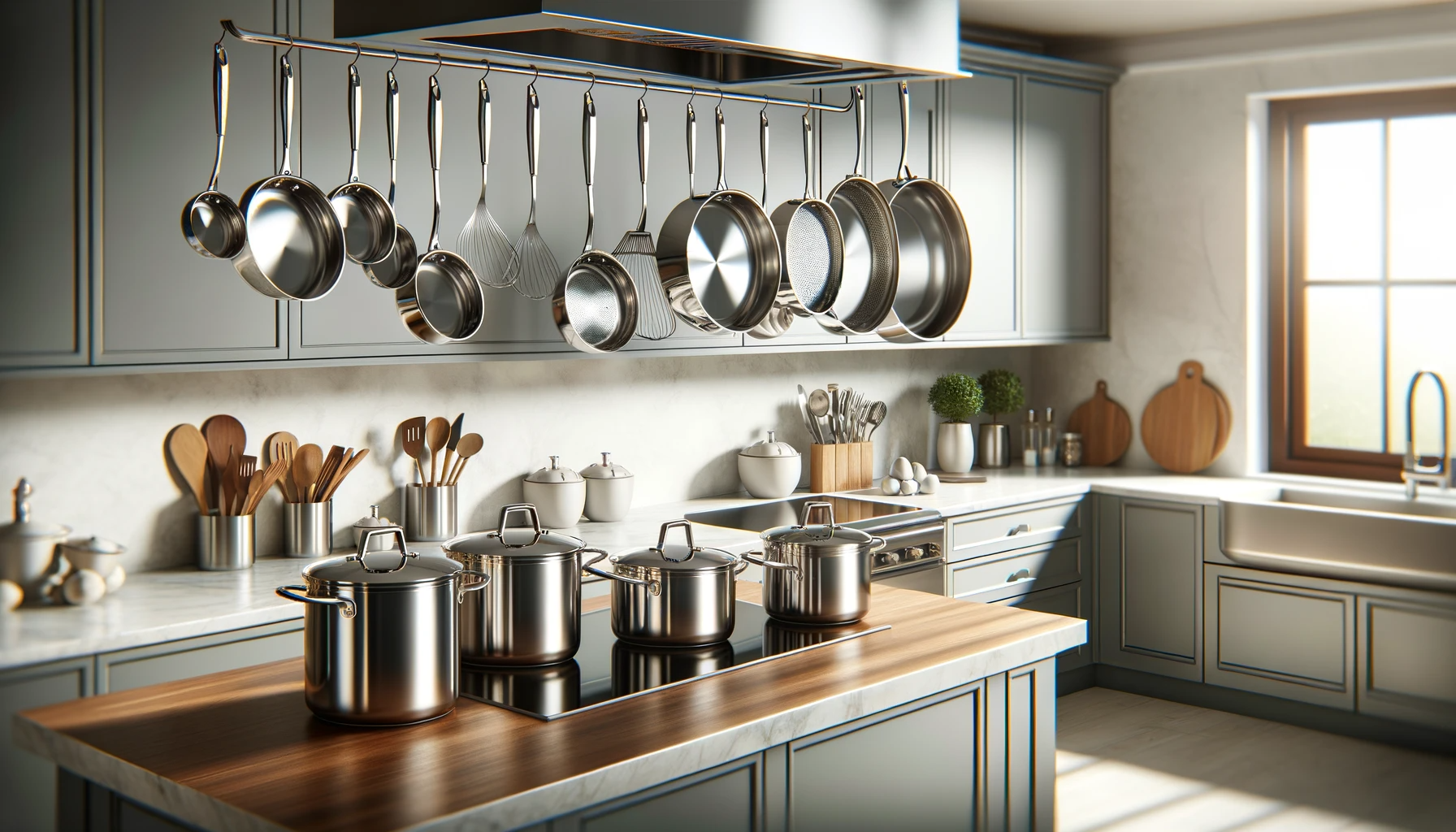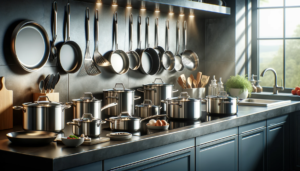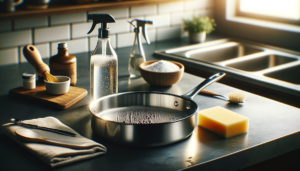Have you noticed your shiny new stainless steel pots and pans taking on strange brownish hues or spotting despite their “stainless” name?
Discoloration in stainless steel cookware can result from various causes, but happens predominantly when the protective chromium layer gets compromised through metal damage or aging effects over time.
Let’s dive into understanding exactly why stainless steel pans often lose their bright sheen, and explore ways to help them resist showing their age.
What Causes Stainless Steel Cookware to Discolor?

Stainless steel cookware becomes discolored when the protective chromium oxide layer gets damaged, allowing the steel underneath to oxidize and rust.
Specifically, overheating, harsh scrubbing, gradual chromium depletion over time, and exposure to salt water are the main culprits that strip away chromium allowing staining and spotting.
We will analyze these causes of stainless steel cookware discoloration in more depth throughout this article.
But first, let’s understand what makes up stainless steel and gives it corrosion-resistant properties when intact.
What is Stainless Steel?

Stainless steel is a popular metal alloy that is made up of steel, along with elements like chromium, nickel and manganese.
The addition of chromium creates a thin, protective surface layer of chromium oxide that prevents rusting and staining that steel would otherwise be prone to.
This makes stainless steel an ideal, durable and corrosion-resistant metal for cookware and kitchen appliances.
The amounts of chromium and nickel can vary in stainless steel.
Higher amounts typically increase corrosion resistance, but also increase cost.
Stainless steel gets its name because it is “stainless” – resistant to stains, water marks and rust under ordinary use.
This depends greatly on the presence of sufficient chromium levels at the surface.
Despite its stain-resistant abilities, stainless steel cookware can sometimes experience discoloration or staining with use over time.
When the protective chromium oxide layer gets damaged or compromised, normal oxidation can lead to cosmetic defects.
The good news is that stainless steel does not easily rust or corrode deeply despite superficial discoloration.
The issues are typically limited to surface stains only, which also means they can be remedied with some work.
Let’s look closer at why stainless steel pans stain and what causes them to become discolored.
Why Does Stainless Steel Discolor?

There are a few reasons why stainless steel cookware might lose its original shine and take on stains, discoloration or darker appearances over time.
Some of the typical causes include:
High Heat

One of the most common ways stainless steel pans get discolored is through heating them too high while cooking.
Stainless steel cookware is generally fine at lower to medium heat levels, but heating them above the ideal temperatures can start to cause oxidation and color changes.
Essentially the protective chromium layer starts to break down when the steel expands under higher heat.
This allows the regular steel underneath to get exposed to oxygen, enabling normal oxidation to occur.
The chromium that makes up part of stainless steel also has its own oxidation process underway at higher temperatures.
This reaction leads to the formation of chromium oxide on the cookware surface, which has a brownish or golden hint to it.
The change can be hard to notice at first, but it leads to gradual discoloration over time.
Usually a steel pan turning brownish indicates that it has been regularly subjected to excessively high heat without food or liquid inside to absorb and distribute it.
The best practice is to avoid preheating empty stainless steel cookware at the highest burner temperatures.
Having food in the pan helps buffer the steel from expanding too drastically beyond its intended heat tolerance.
Harsh Cleaners and Scrubbing
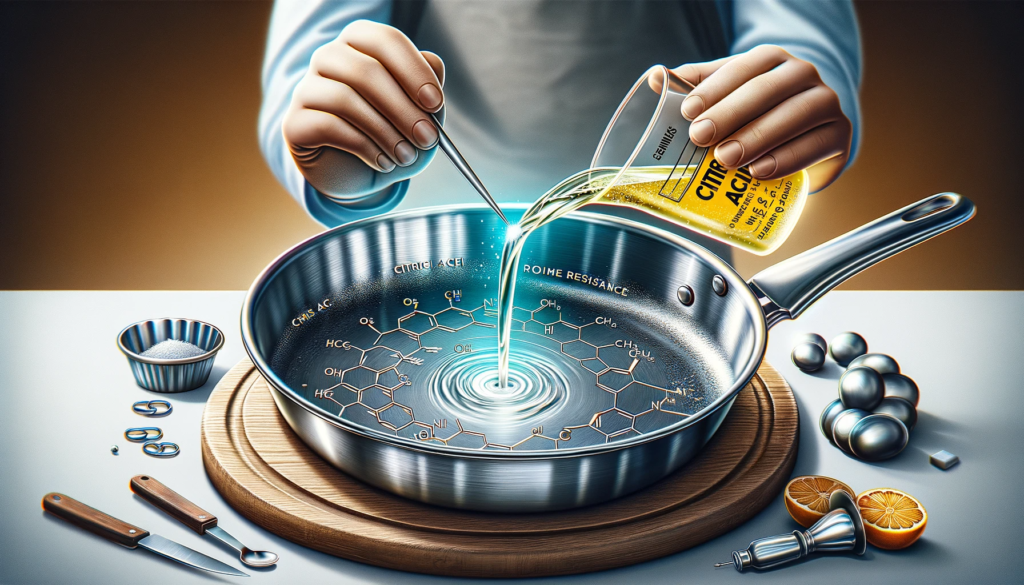
In addition to heat damage, the overuse of harsh cleaning techniques and chemicals can also damage stainless steel over time.
Powerful cleaners that contain abrasive substances like acids, bleach, ammonia and chloride can start breaking down stainless steel’s protective qualities.
Likewise, using rough scrubbing pads or brushes can wear away at the chromium oxide barrier with extended use.
When this surface layer gets compromised by chemical cleaners or abrasive scrubbing, more stainless steel gets exposed at the base where oxidation can freely occur.
As steel reaches contact with oxygen and moisture, iron oxide spots and stains begin to form.
Over time, aggressive cleaning gradually causes visible wear, corrosion spots and overall color loss of stainless steel’s original silvery finish.
To prevent damage through this method, stainless steel cookware should only be cleaned gently by hand or dishwasher using mild detergents.
Non-abrasive soft sponges or cloths are also recommended rather than scrubbing pads for a delicate finish.
Depletion of Chromium

Even with proper care, the protective chromium in stainless steel can become depleted over an extended period of time and usage.
As pots and pans continually expand and contract through heating and cooling cycles, miniscule amounts of chromium get leeched away at the surface.
Over many cooking sessions and washes, the loss of surface chromium adds up until the oxidation resistance gets reduced substantially.
Without sufficient chromium levels, the steel has lower immunity against discoloration through exposure to air and water.
This phenomenon occurs naturally, but very gradually in quality stainless steel cookware.
However, cheaper stainless steel is more vulnerable to rapid chromium depletion because of lower chromium content overall.
Higher percentages around 18% chromium or more create a more resilient barrier layer that holds stable for considerably longer.
Especially vigorous scouring and extremely high heat also accelerate chromium loss.
But eventually even the best stainless steel will show signs of aging without replenishment of this protective mineral at the surface level of molecules.
Exposure to Salt Water
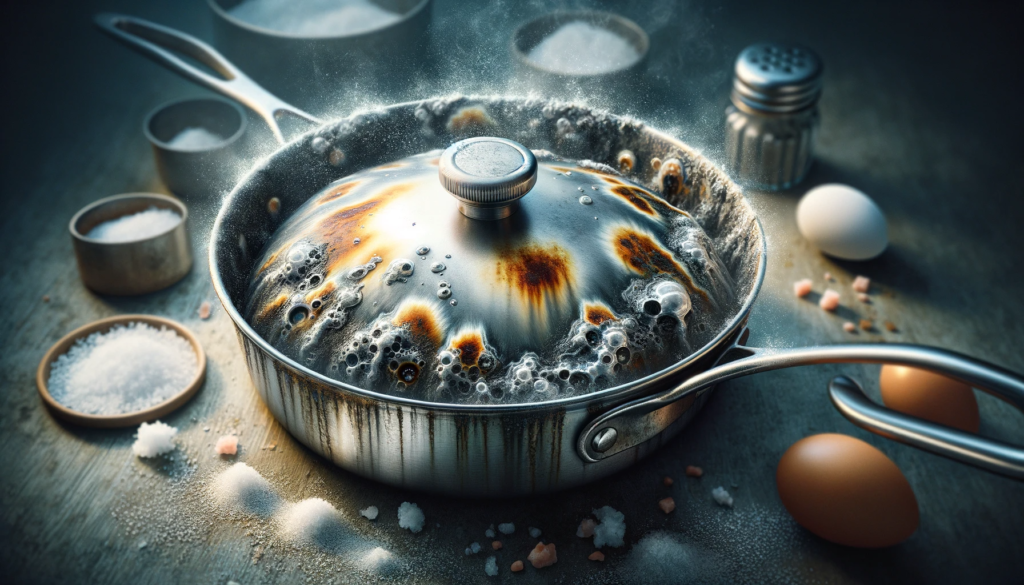
While stainless steel stands up admirably well compared to other metals, salt water happens to be one of its prime weaknesses.
The chloride content makes salt water highly corrosive to most metals, owing to a chemical reaction called halogenation between the chlorine and the chromium oxides.
Over time, salt water etched into stainless steel surfaces through corrosion breaks up the protective layer.
This lets normal water oxidation turn into rust and staining where the underlying steel gets uncovered.
So stainless steel cookware exposed to sea water or certain salt water cleaning solutions can sustain corrosion damage that manifests as surface discoloration.
Boiling salty liquids further accelerates the corrosion, especially if concentrated through evaporation.
Sometimes tiny pinprick pits form, followed by wider rust stains.
Adding to this effect, salt and salty foods may get stuck burnt onto pan surfaces after cooking.
These residues allow continuing corrosion unless fully scrubbed off.
While not an issue with everyday use, stainless steel and salt water require thorough prompt cleanup and cautious care to avoid permanent blemishes.
Preventing Discoloration

Now that we know what typically causes stainless steel pans to lose their shine and develop stains, what are some ways to prevent this from happening too quickly?
Here are some useful tips for keeping stainless steel pristine for longer:
Cook at Lower to Medium Heat

Avoid overly extreme heat levels for daily cooking sessions so that the chromium oxide protective layer does not get damaged.
Heat foods gradually at a lower to medium burner setting.
If preheating at higher temps, ensure the pan has liquid or food content rather than preheating on empty.
Letting pans regularly get too hot on their own allows oxidation resulting in coloring and spots.
Excessive high temperatures also deplete chromium faster over time.
Being more conservative with heat preserves longevity.
Use Non-Abrasive Cleaning Tools

Soft cleaning pads, nylon brushes and microfiber cloths are gentle enough for surface debris removal without scratching away at the protective finish.
Avoid abrasive scrubbers or steel wool pads not formulated specifically for stainless steel.
Likewise skip chemical cleaners that can interact negatively with the metal finish.
Bleach, ammonia, hydrochloric acid and salt-based agents in particular improve cleanliness at the cost of surface erosion.
For suitable detergents, look for “stainless steel-safe” indications or mild soap and water solutions.
Employ Passivation or Re-Passivation

Passivation is a chemical process applied to stainless steel that removes free iron contamination and enriches surface chromium oxides.
This restoration treatment renews corrosion protection for improved stain prevention and sheen.
Passivation can be done easily at home too using a citric acid solution.
Over time with use, re-passivation maintains protective chromium concentration, closing up gaps that may allow oxidation issues.
Use Separate Cookware for Salt Water purposes

Avoid cooking highly salty dishes often in stainless steel, especially anything where salty liquid might evaporation and concentrate.
The corrosion risks justify keeping separate cookware specifically for boiling pasta, seafood and other salty foods less frequently.
Restrict stainless steel more for sweeter, acidic or oil-based recipes instead.
Similarly, prevent exposure to marine life applications or harsh industrial salt cleaners unless the stainless steel grades are appropriately specialized corrosion-resistant varieties.
By taking suitable precautions – milder heat, gentle cleaning, surface renewal and strategic usage, stainless steel cookware can glow resiliently for years before signs of aging emerge.
A few surface stains can also be improved through metal polishing techniques, but avoidance of damage protects quality best.
Paying attention to care, maintenance and usage habits keeps stainless steel cookware in its optimal state with minimal unsightly discoloration to detract from the functional performance.
Respecting the limitations of the alloy makes enjoying long-lasting polished beauty in stainless steel cookware possible.
Conclusion
In conclusion, stainless steel cookware is susceptible to discoloration when its protective chromium oxide layer gets compromised.
Overheating empty pans, using harsh scrubbers and cleaners, a natural depletion of surface chromium over time, and exposing pans to corrosive agents like salt water are common culprits.
Being mindful of temperature regulation, gentle cleaning, passivation maintenance, and strategic cookware allocation can together help preserve stainless steel’s iconic polished sheen and prevent unsightly spotting or colors.
With proper care, quality stainless steel can keep shining brilliantly for years.
